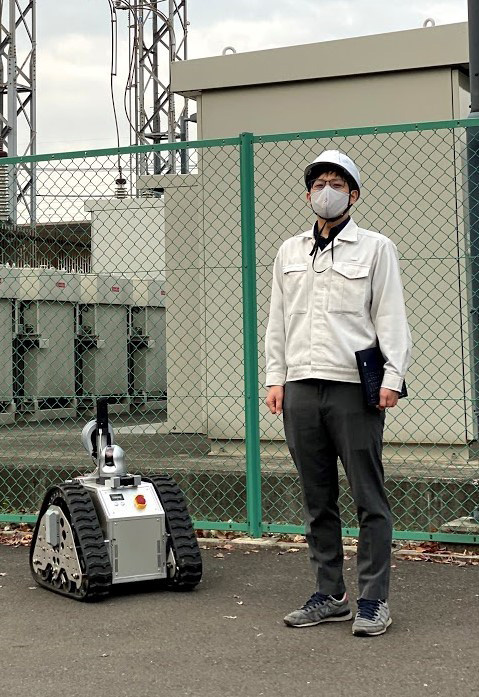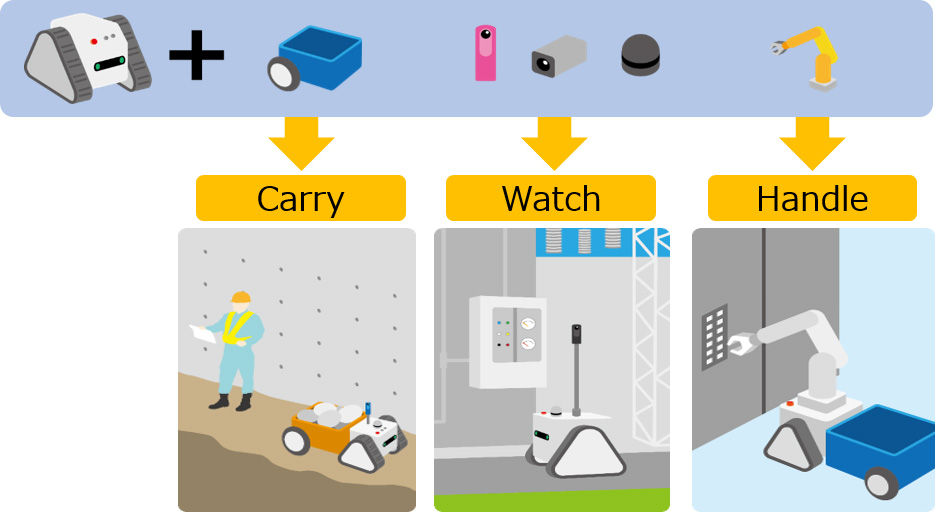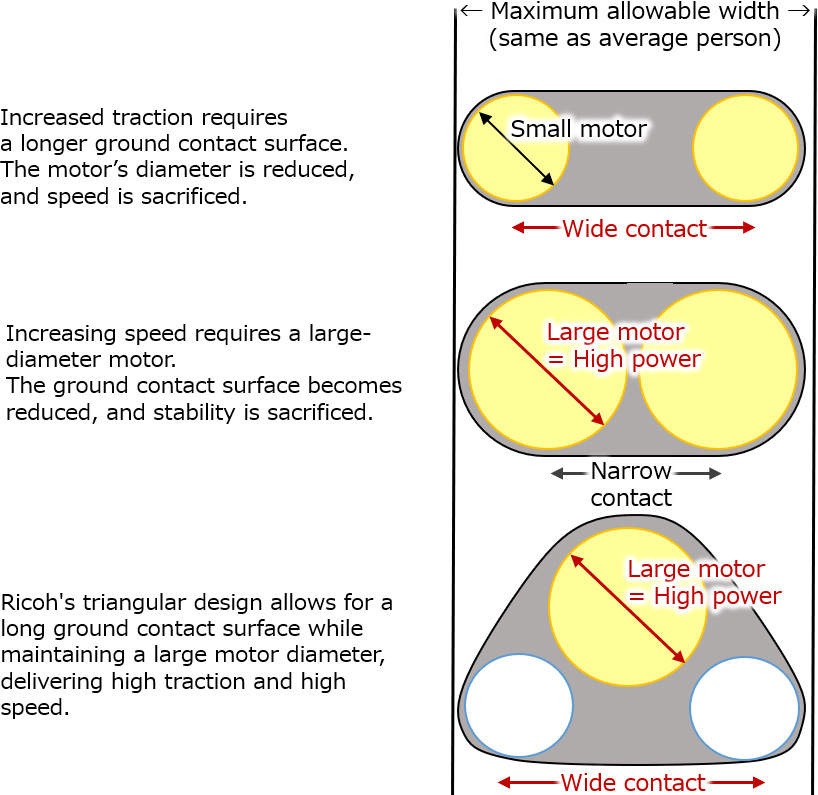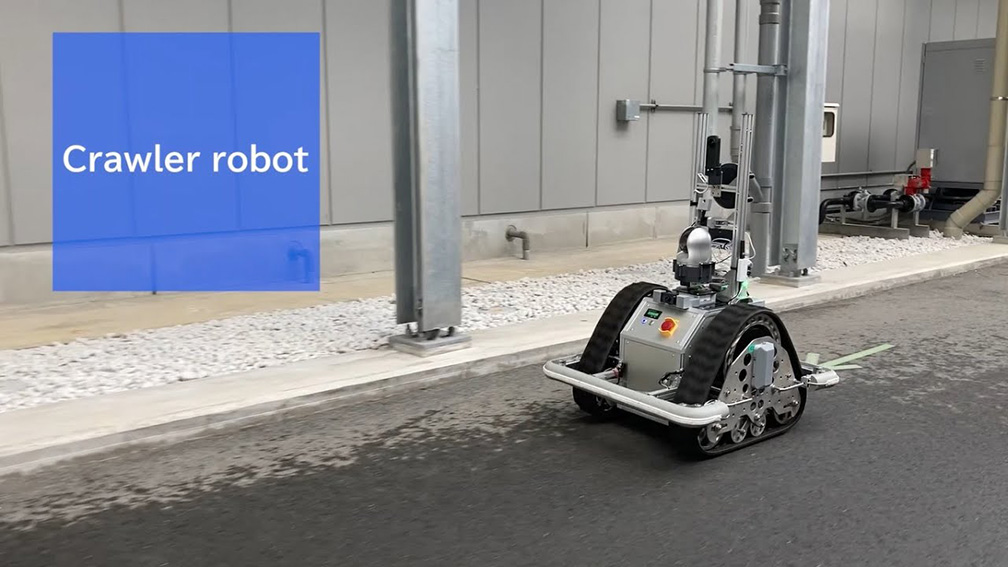- Home
- Ricoh's Technology
- Compact Crawler Unit for Rough Terrains
Compact Crawler Unit for Rough Terrains
A Highly Mobile Robot That Can Carry, Watch, and Handle Objects in Place of Humans
Background
Robots were primarily used in industrial settings such as production facilities. Today, they are being utilized in more everyday environments like commercial facilities, offices, and homes. Demand for robots and the sphere of their activities is growing in response to labor shortages due to the aging population and human contact avoidance caused by the spread of the COVID-19 infection.
New applications for robots include security at airports or inside buildings and finding lost children in shopping malls. Unlike conventional industrial robots, these new service robots need to be much more flexible and mobile as their operating space is shared with humans.
Some of these service robots offer great convenience in a wide range of areas by being mobile. However, they are often limited to indoor use because they cannot traverse small gaps, slopes, or other terrains easily for humans to pass. Demand has increased for a compact, versatile transport unit that can cope with various traveling environments.
Solution
Ricoh has developed a crawler unit that can run freely indoors and outdoors, climbing and descending slopes and uneven floors. The unit is suitable as the base for compact service robots. Its small size (width, depth, height are all approx. 60cm) enables it to operate and turn in a space just wide enough for a human to pass. The speed can be freely adjusted from up to standard 4 km/h (average human walking speed) to a maximum of 10 km/h (average human running speed).
With the crawler unit used as the underside, by changing the combination modules on the upper part of the crawler unit according to the application, the robot can replace the human's “carrying,” “watching,” and “handling.” For example, the robot can replace human workers in various situations such as transporting and towing materials at construction sites, inspecting facilities at substations and chemical plants, patrolling around commercial facilities, and even harvesting crops.
 Crawler unit with in-wheel motor
Crawler unit with in-wheel motor

Technical Highlight
Crawler-type drive mechanism
Ricoh adopted a crawler-type drive mechanism utilizing a rubber belt. The robot can travel over various indoor and outdoor sites where humans work, such as steps, uneven surfaces, rough terrains, gravel roads, and grasslands.
A compact mechanism to conquer rugged terrains
Crawlers are superior to wheels in conquering difficult terrains, so they are widely used in agricultural and construction machinery, but most are larger than a human being. Typically, reducing the size of a crawler also reduces its speed and running performance. Ricoh developed a crawler unit that uses the same space as a human being yet has both speed and maneuverability.
The answer is the triangular design where the in-wheel motor is installed at the top. This triangular crawler shape successfully balances size, speed, and traction performance at a high level. (The design has been patented.)

Ricoh's Vision
Ricoh has been supporting working people through office automation and digitalization by providing easy-to-use, high-quality office equipment utilizing mechanical engineering, electrical and electronic engineering, and information and controller technology. Ricoh has applied its unique technologies and spirit of helpfulness to robots to create a small mobile device that can move at the same size and speed as a human.
The next challenge is to enable these robots to move and work with the same intelligence as humans. People head to a destination while avoiding obstacles. They see, hear, and feel the things that occur in the field daily. They record, organize, and analyze this as information and apply it to improve their tasks. Using Imitation Learning Technology, Ricoh is working on reproducing these processes in a robot.
The goal is to create a robot with the same size, speed, and traction as a person and travels as intelligently so that it can assist and replace a series of mundane work processes conventionally done by people. People will then be able to increase the number of creative jobs only they can do.
Ricoh will extend its helping hand beyond offices to all the areas of work. Through automation and computerization using service robots, Ricoh will continue to provide help in various workplace environments.
Sorted by : field “Control Systems” “Devices”
